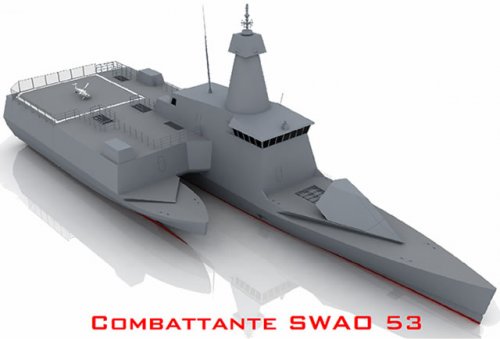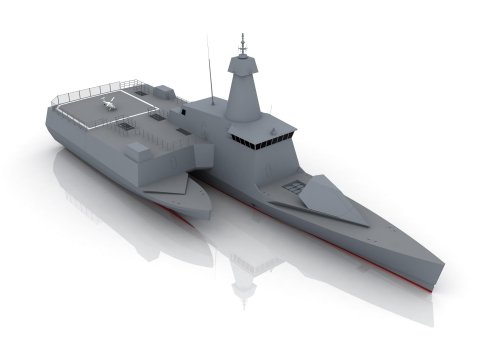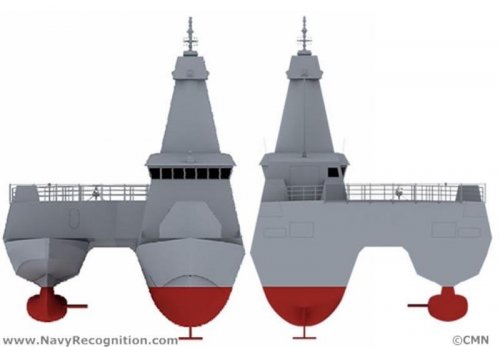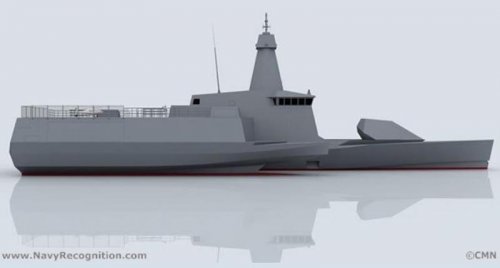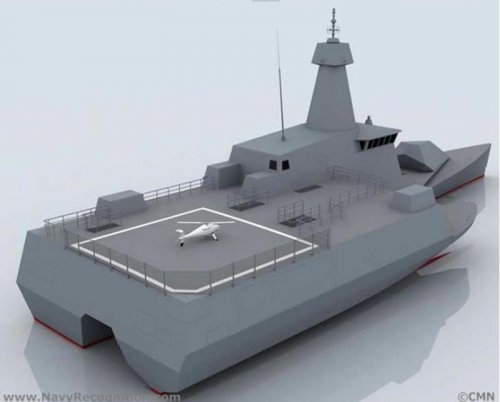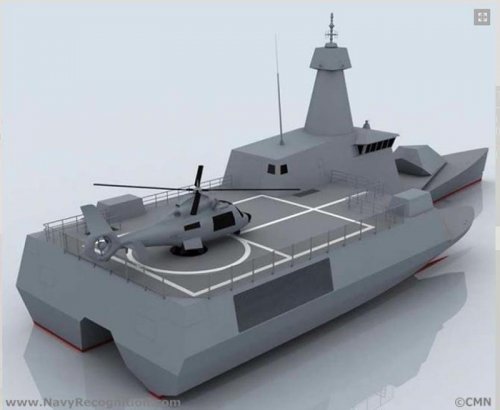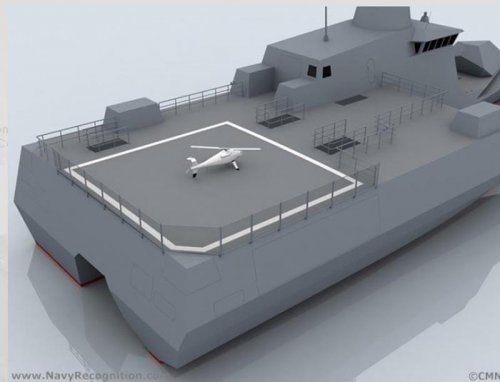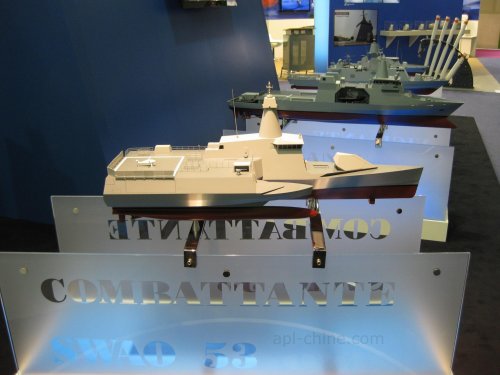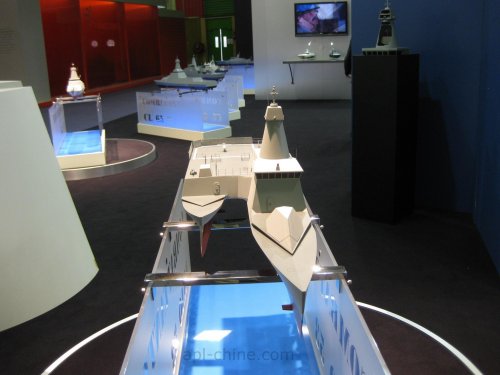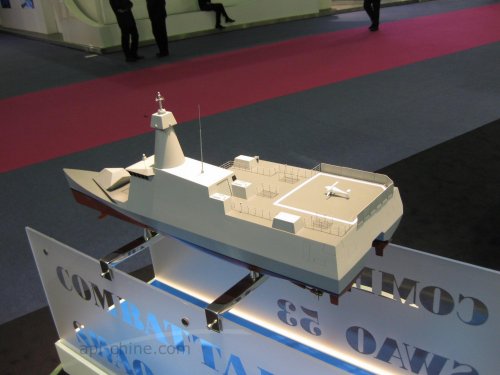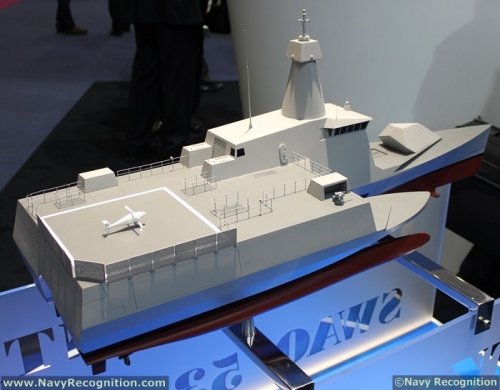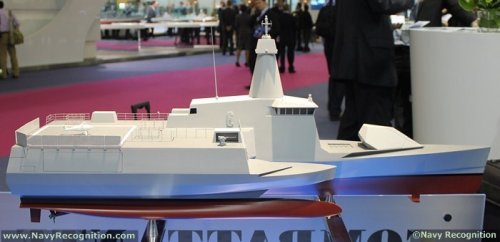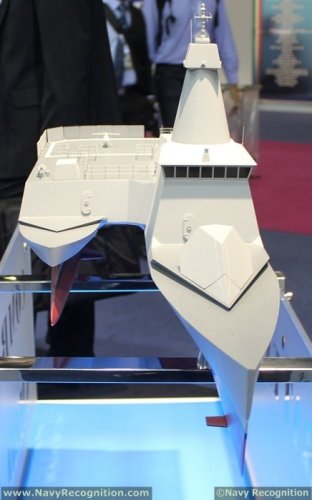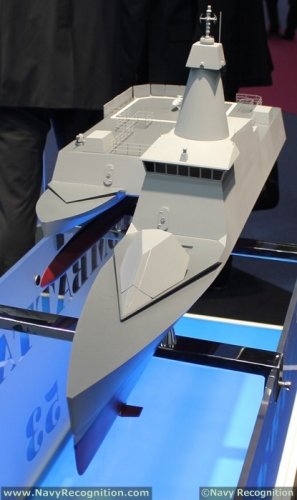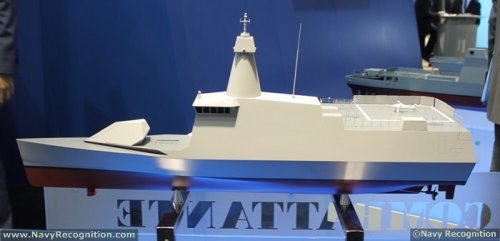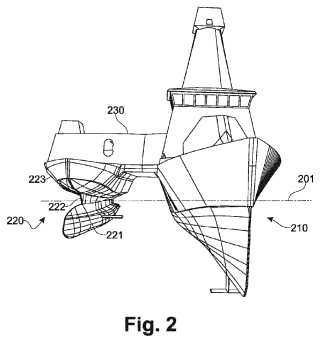Artist's impression of CMN (Constructions Mecaniques de Normandie) Combattante SWAO 53 concept to be unveiled at Euronaval 2012.
The Combattante SWAO 53 is revolutionary stealth ship concept by CMN with a unique outrigger hull design, fitted with a large [helipad] capable of accommodating both helicopters and UAVs. SWAO stands for "Small waterplane area outrigger".
Technical Data
Back to top
Design
Outrigger hull design
Missions
N/A
Weapons
Guns:
» 1x 57mm main gun
» 2x 30mm remote weapon stations
Missiles:
» 8x VLS tubes for SAM (likely MBDA's Mica VL)
Sensors, Electronics and Decoys
Sensors are all grouped in a single "C-MAST" integrated mast.
Developed in a partnership between CMN, Cassidian and Ineo Defense, C-MAST is a single compact and lightweight mast, which houses 2D, 3D and navigation radars, optronic, electronic warfare and communications systems.
2x Decoy Launchers
Engines/Propulsion
n/a
Type
Concept Ship
Crew
26 sailors. Accomodation for 9 passengers
Operators
None. (Ongoing project)
Performance
Speed: 30 kts
Range: n/a
Endurance: n/a
Displacement
n/a
Propulsion
n/a
Aircraft
Large platform to accomodate UAVs and Helicopters
Dimensions
Length: 53 m
Bream: 16 m
Maximum Draft: 2.6 m
Source:
http://www.navyrecognition.com/index.php?option=com_content&task=view&id=660
The Combattante SWAO 53 is revolutionary stealth ship concept by CMN with a unique outrigger hull design, fitted with a large [helipad] capable of accommodating both helicopters and UAVs. SWAO stands for "Small waterplane area outrigger".
Technical Data
Back to top
Design
Outrigger hull design
Missions
N/A
Weapons
Guns:
» 1x 57mm main gun
» 2x 30mm remote weapon stations
Missiles:
» 8x VLS tubes for SAM (likely MBDA's Mica VL)
Sensors, Electronics and Decoys
Sensors are all grouped in a single "C-MAST" integrated mast.
Developed in a partnership between CMN, Cassidian and Ineo Defense, C-MAST is a single compact and lightweight mast, which houses 2D, 3D and navigation radars, optronic, electronic warfare and communications systems.
2x Decoy Launchers
Engines/Propulsion
n/a
Type
Concept Ship
Crew
26 sailors. Accomodation for 9 passengers
Operators
None. (Ongoing project)
Performance
Speed: 30 kts
Range: n/a
Endurance: n/a
Displacement
n/a
Propulsion
n/a
Aircraft
Large platform to accomodate UAVs and Helicopters
Dimensions
Length: 53 m
Bream: 16 m
Maximum Draft: 2.6 m
Source:
http://www.navyrecognition.com/index.php?option=com_content&task=view&id=660

